Mold Prevention – 27 Tips To Prevent Mold and Mildew In Your Home
This post may contain affiliate links. Read our full disclosure.
Mold prevention is a pretty big deal. It’s such a big deal that I actually feel that it should be taught yearly in middle school, high school and college. I also feel that every homeowner (upon purchasing a home), every tenant (before signing a rental agreement), and every investor (before closing on a property), should be required to take a class on how to prevent mold.
Sound extreme? Not really. Imagine how different the world and our health would be if we did a better job of preventing mold by knowing what to look for, what variables to monitor and control both indoors and outdoors, and basic do’s and don’ts.
Today I am diving into everything mold prevention. While the information on how to prevent mold and mildew in your home might seem overwhelming, it is important that you follow every tip outlined. Skip one and you compromise all the hard work you put into preventing mold with the other steps you took. You have to be vigilant and diligent in order to prevent mold or to keep mold from coming back if you have had a mold problem before.
If you are a homeowner, everything on this list is within your control. If you rent, you will need to work with your landlord on some of the issues you might find.
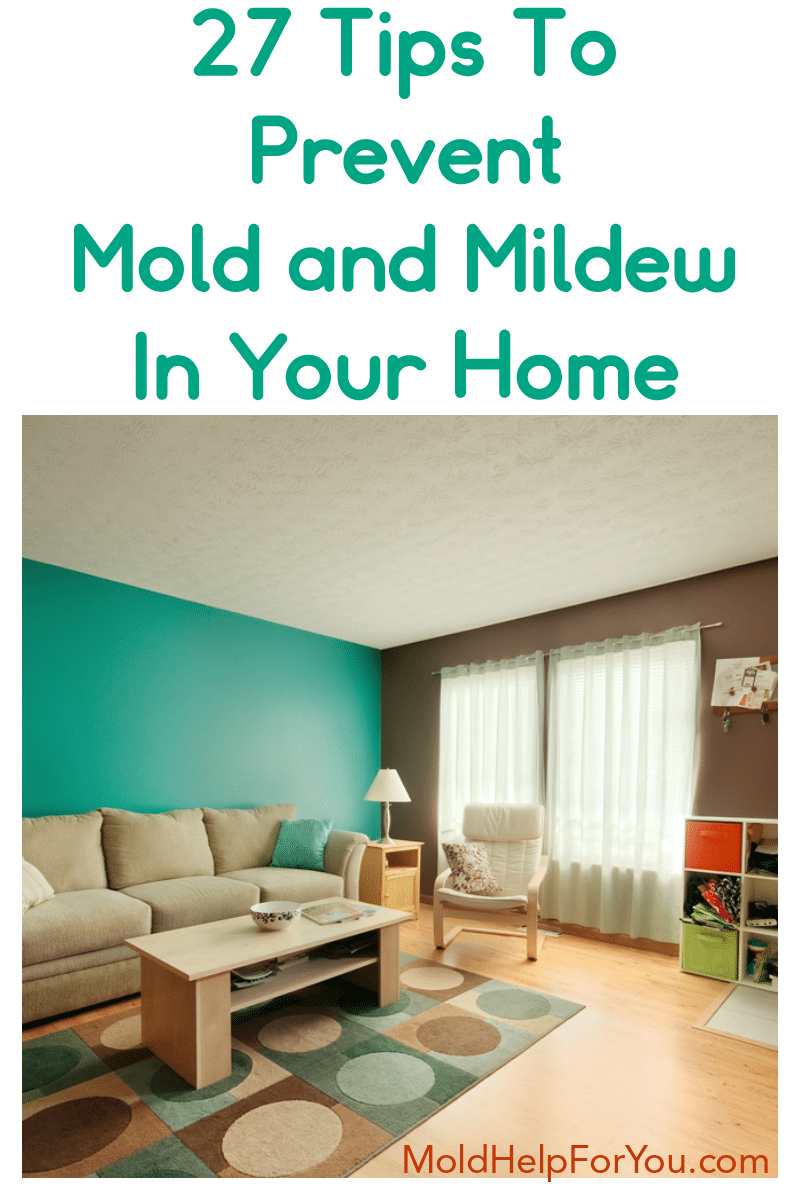
27 Tips To Prevent Mold and Mildew In Your Home
1. Inspect Your Home Monthly
Staying vigilant of any leaks around the house, especially in bathroom faucets, showers and toilets is key. Also, check your baseboards several times per year. If you see any discoloration, you know you have a water intrusion occurring.
Other signs of a water intrusion include general dampness (like on floors or around windows and doors), odd odors, discoloration, peeling paint, sudden onset of condensation, and compacted insulation.
2. Prevent and Fix Leaks
Prevent leaks by performing basic home maintenance on a regular basis. Make sure that your water pressure isn’t too high as this can cause pipes and connections to burst. It also shortens the life of your pipes. Insulate or wrap your pipes during cold weather.
Use leak alarms to alert you to any leaks. Fix leaks immediately and correctly using a licensed plumber.
3. Dry Wet Areas Immediately To Prevent Mold and Mildew
Cleaning up standing water or moisture should be obvious but you would be surprised at how many people do not do this. Most, but not all molds need 24-48 hours of moisture to begin to grow. Therefore if a suitable material in your home is wet for more than 24 hours then you run the risk of mold starting to grow. As soon as you see any standing water, clean it up and dry the area out. This includes “minor” amounts of water like a wet shower. Dry the shower after each use (see my post on How To Prevent Bathroom Mold for more detailed information). This also includes major amounts of water from a broken pipe or a flood. Of course, standing water includes everything in between.
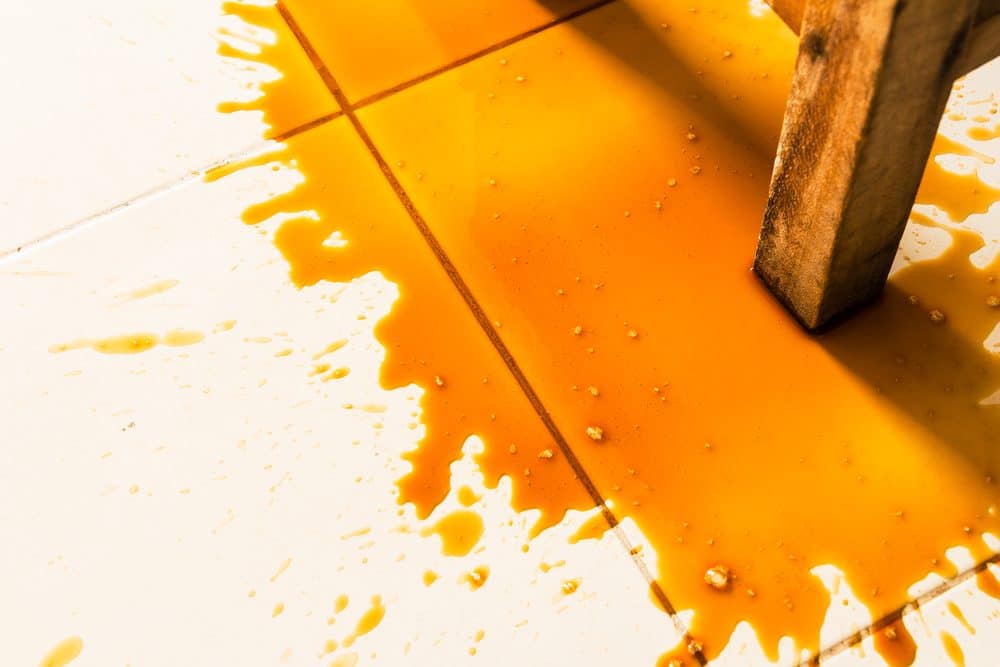
4. Be Diligent About Proper Ventilation
Mold loves condensation. Loves it! Condensation forms where there is improper ventilation. You know when your bathroom mirror fogs up? That means that there is improper ventilation.
Always, always, ALWAYS use an exhaust fan (like this one that I use) or open a window when showering, cooking, and washing the dishes. If you have a laundry room make sure you have an exhaust fan installed and turn it on when running a load of laundry. Vent your dryer to the outside of your house. Basically, vent anything that uses moisture to work.
If you do have condensation forming, dry the surface immediately. I would take it a step further and spray the area that has condensation with EC3 solution as well. It wouldn’t hurt to burn this mold control candle.
5. Monitor Indoor Humidity Levels To Prevent Mold
The EPA recommends keeping indoor humidity between 30 and 60 percent. The toxicologist I worked with suggested that lower is even better. You can measure humidity with a moisture meter like this or a humidity monitor like this. You’ll also be able to detect high humidity by simply paying attention to condensation formation. For more information on humidity and humidity meters please read that link you just passed over.
If you have high humidity run a dehumidifier. A dehumidifier will remove any moisture from the air that you aren’t able to prevent and will help you control the humidity in the house. It’s particularly important to have dehumidifiers in damp areas, such as basements and crawl spaces.
If you have a large home, consider setting up at least two dehumidifiers in different areas of the house. For help choosing the best dehumidifier for your needs, please read my post on the Best Dehumidifiers For Mold Prevention.
6. Ensure That There is Proper Air Flow And Circulation In Your Home
According to the EPA, as temperatures drop, the air is able to hold less moisture. Without good air flow in your home, that excess moisture may appear on your walls, windows and floors. To increase circulation, open doors between rooms, move furniture away from walls, and open doors to closets that may be colder than the rooms they’re in. Let fresh air in to reduce moisture and keep mold at bay. The more windows you can open, the better. Use ceiling fans year round as well.
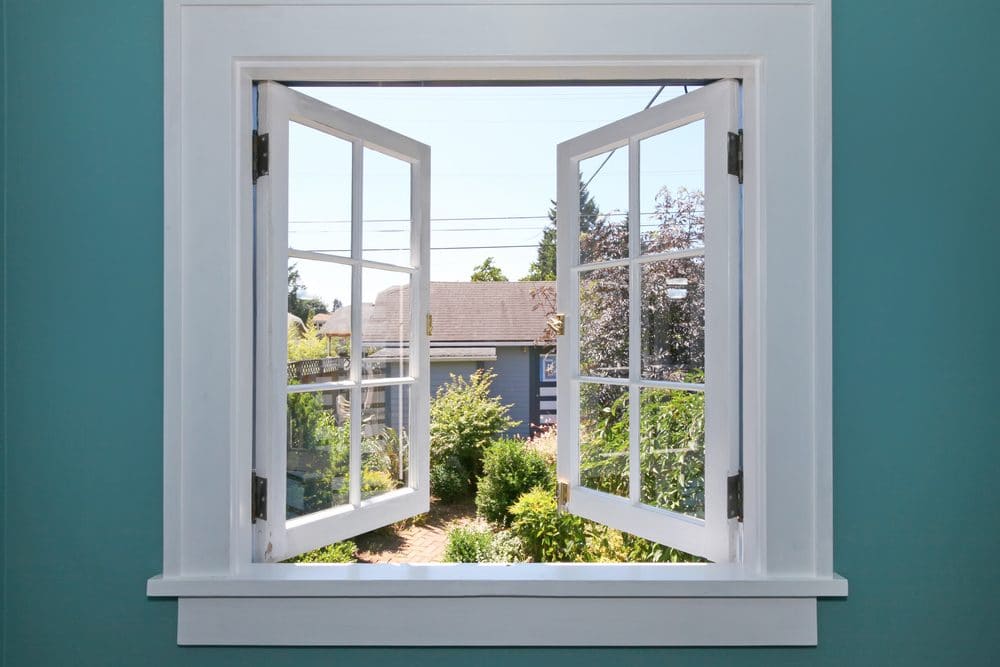
7. Invest In Proper Air Purification Units
Mold spores fly around. The move from room to room. They get into your air ducts. The hide and come out to play whenever the air gets stirred up. To prevent those spores from taking over, proper air filtration is necessary. If you own your home, you may look at investing in a whole-house air filtration system like this one. Otherwise, using a mix of special air purifiers throughout the house ought to do a pretty good job of removing most of the mold spores.
I use three different air purifiers to remove mold spores in my home. After testing about a dozen different air purifiers, my favorite are:
You can find the other air purifiers to remove mold that I recommend here.
8. Improve Insulation To Prevent Mold
Duct systems that carry heated or cooled air throughout your house must be insulated whenever they pass through unheated or uncooled spaces like attics or basements. If not, condensation can form inside the ducts and, when combined with dust in the air, can allow mold to grow in the ducts, and then spores can easily circulate throughout your entire house.
Cold surfaces such as walls, pipes, and tanks are susceptible to having condensation form on them. You can prevent this with extra insulation. Outfit metal pipes with insulating sleeves, wrap toilet and water tanks with insulating blankets, and add more insulation to basement, exterior wall, and attic floors, ceilings, and windows.
9. Get The Right Size HVAC Unit
While an oversized unit will cool the house down faster, it won’t remove as much moisture from the air thereby increasing the humidity in your home…something mold loves.
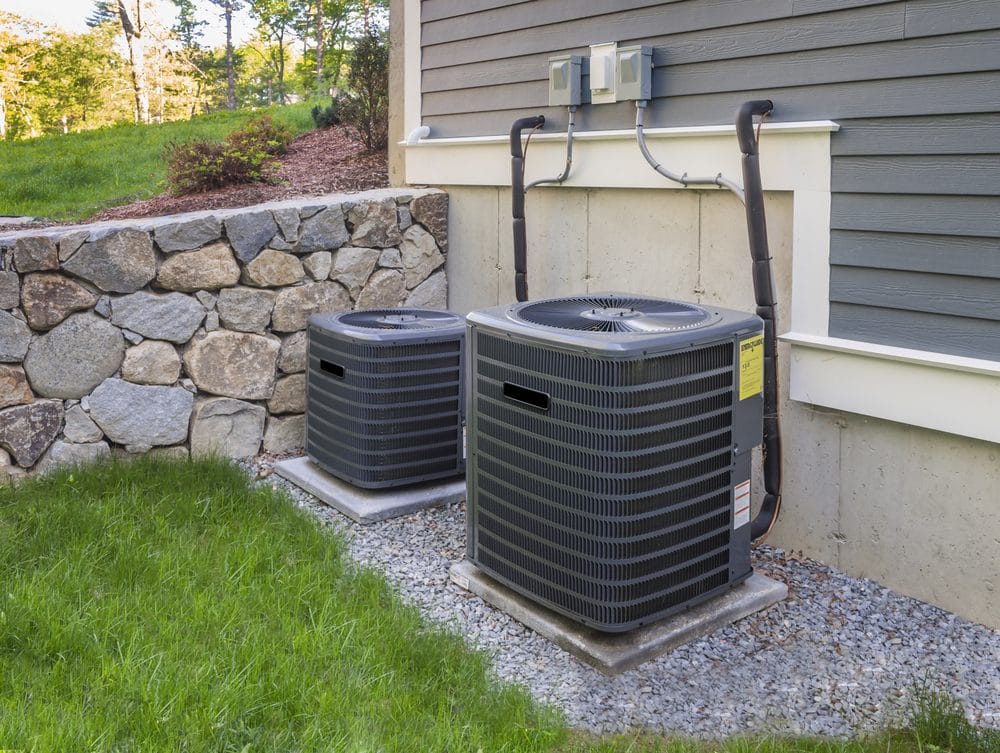
10. Inspect The HVAC Condensate Drain Pipe
Inspect the condensate drain pipe (the narrow white pipe sticking out the side) to make sure it’s dripping regularly. If it isn’t, the pipe is blocked and water may be accumulating inside the unit or on the floor. It is very important to unclog the HVAC units drain pipe regularly.
11. Clean Your Air Ducts And Vents
Ducts trap mold spores like you wouldn’t believe. Like I mentioned before they are also subject to condensation and mold growth. It is important to get your air ducts cleaned yearly by a professional who has the right tools.
I also suggest fogging inside your vents every few months. This mold control fogger and this mold control solution are what I use. You can read more about fogging for mold here. You can also spray your ductwork with Superstratum to prevent mold from growing.
12. Shut Windows and Doors When The Air Conditioner Is On
When you open windows and doors, you let air conditioning escape and invite humid air into your cooler home. This causes condensation, which mold loves. So keep doors and windows shut when the AC is running.
13. Install Moisture Barriers In Crawl Spaces To Prevent Mold
A crawl space that has a dirt floor is susceptible to mold, because moisture coming up from the ground can make the area wet all the time. To prevent this, dry out the area with fans, and then cover the dirt with a sheet of 6 mil polyethylene (landscapers’ plastic),
Covering the dirt won’t necessarily prevent moisture from coming up, but it will stop mold from growing in the crawl space itself.
14. Direct Water Away From Your House
Mold needs water to grow so why feed it? You would be shocked how many places there are for water to creep in unnoticed.
Sprinklers don’t need to water your house so why risk moisture intrusion with poorly aimed sprinklers? Aim all sprinklers away from your house.
Improve outside grading and drainage by keeping soil always sloping away from your house.
Is your home at the bottom of a hill or slope where water flows towards it? If so, find a way to direct water out of your yard where it can pool and into the gutters or street.
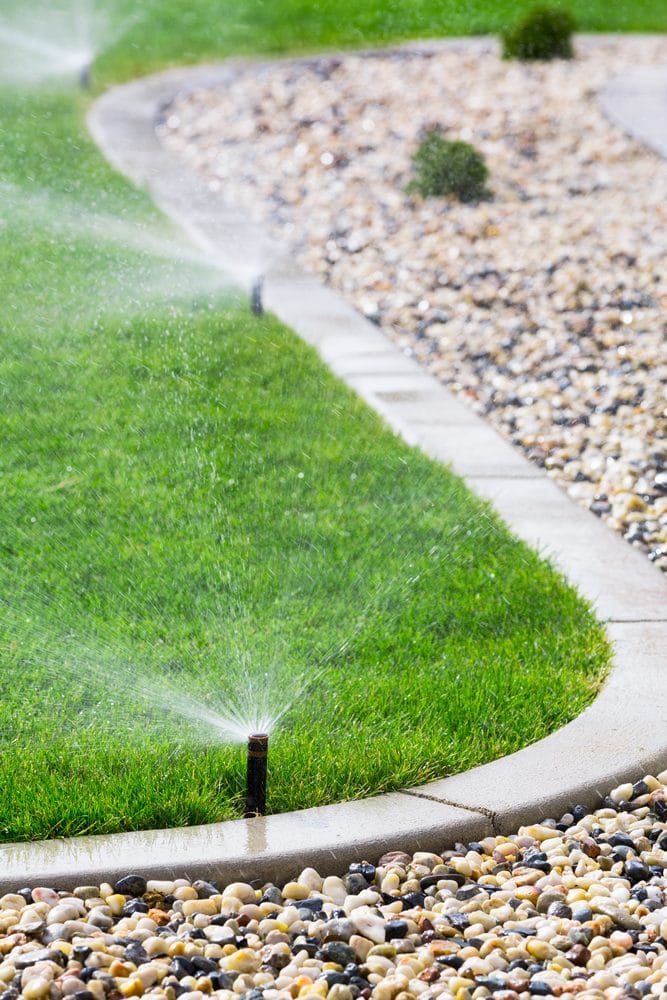
15. Install, Repair, And Clean Roof Gutters
Rain gutters are a great way to direct water away from your house. However, they will only do so if they are cleaned regularly and repaired quickly should a part of it break or become compromised.
This might be a somewhat obvious one but even I am guilty of failing to notice how quickly my gutters fill up. Fallen leaves and other organic material are food for mold. While mold won’t grow from the inside of your gutters into your home through the roof, the spores will fly off and enter through open windows and doors or on the bottom of shoes. Just don’t make it easy for mold to get into your home. Keep those gutters clean.
16. Avoid Carpet Or At Least Limit Carpet
Mold spores love carpet. They are almost impossible to completely get out of carpet. If you have the option of choosing your flooring, tile is best followed by wood.
At the very least, replace basement and bathroom carpets with area rugs. Areas that are prone to being wet shouldn’t be fully carpeted. This includes basements that are damp or prone to flooding, and bathrooms. Instead, remove the carpet and install area rugs if necessary. Area rugs are better than carpet because they can be removed, cleaned, and dried if they get wet.
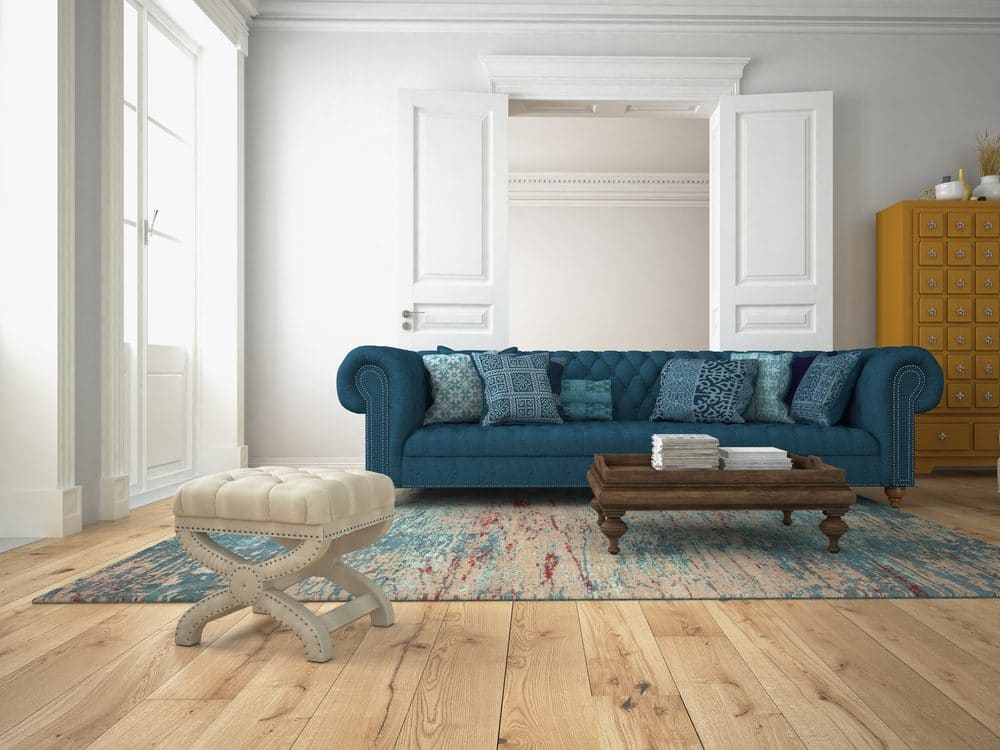
17. Do Not Let Wet Towels Pile Up
Wet towels are a breeding ground for mold. It usually starts with that mildew smell. Mildew smell = proper environment for mold to grow. Dry towels outside in-between washings. If you cannot place wet towels outside, then hang them in the most open area of your house to dry. Never leave wet towels on carpet, beds, couches, etc… There are some great mold and mildew resistant towels that are worth a look.
18. Don’t Let Damp Clothing Sit Around
This is the same situation as wet towels. Dry items immediately after washing. Do not line dry inside your home. Line dry outside or in the garage.
19. Dry The Inside Of Your Washing Mold After Each Use To Prevent Mold Growth
This is especially true of front-loading washing machines which are notorious for mold growth. Ideally, leave the washing machine door open a crack after use. Spray white vinegar or EC3 cleaning solution inside once a week. For more information, check out my post on preventing and cleaning mold in your washing machine.
20. Practice Proper Storage Techniques
Dry items thoroughly before storing them. Store items in dry, well-ventilated areas.
Keep all storage items at least several inches up off concrete floors. It is pretty easy to throw boxes of holiday décor, keepsakes, and unused items into a garage or shed. Perhaps you rent a storage unit. Did you know that foundations in these areas are notorious for cracking and settling? This makes it easy for dampness to seep in.
Keeping storage items off the ground itself is an important way to prevent mold growth from occurring. This is especially important with organic material like cardboard boxes. Avoid using wooden shelves. Wire shelving is best.
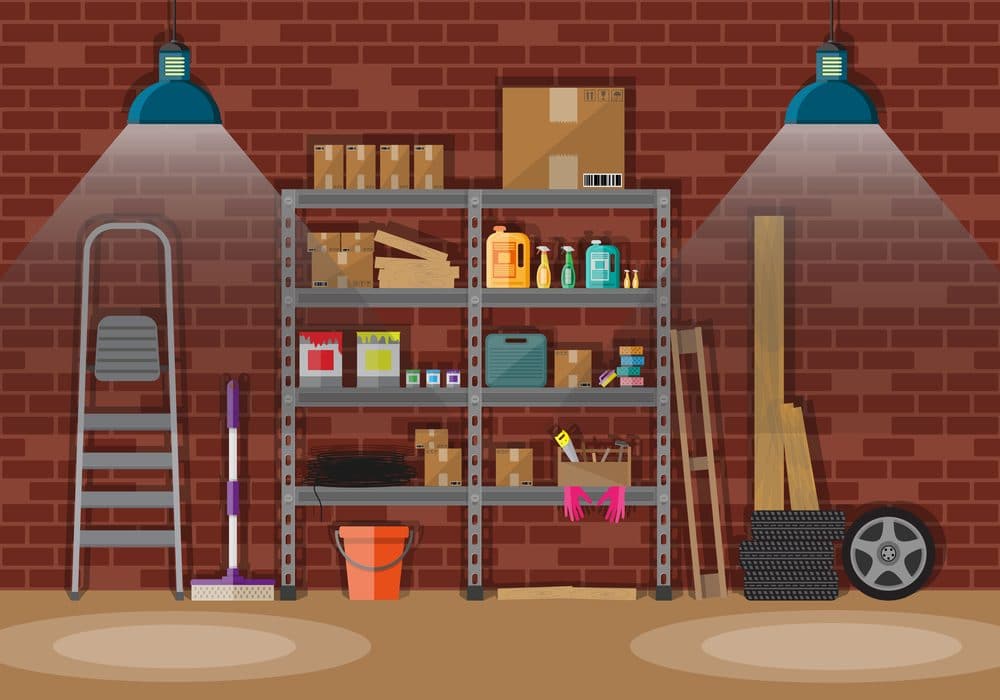
21. Perform Routine Maintenance On Your Fridge and Freezer
Clean refrigerator drip pans regularly. Mold loves to grow there! If your refrigerator and freezer doors do not seal properly, moisture can build up and mold can grow there. Remove any mold on the door gaskets and replace faulty gaskets.
22. Eliminate Clutter
Cast a critical eye on household clutter and pare down your stuff. Clutter blocks airflow and prevents your HVAC system from circulating air. Furniture and draperies that block supply grilles cause condensation. All this moisture creates micro-climates in your home that welcome and feed mold growth.
Mold spores hide in dust. The less “dust collecting” items you have, the better. For any display items, put them in a glass enclosed case. Also, keep as much as possible in cabinets and behind closed doors. It has less of a chance of collecting dust that way.
23. Limit Indoor Plants And Monitor Mold Growth
Yes, I know that plants help to “clean” the air as they provide oxygen BUT the soil is a breeding ground for mold. If you do have indoor plants, it is a good idea to check the soil often and change it regularly. Also, do not over water plants. Make sure you have a drip tray and never place plants on carpeted areas. You can read more about mold in houseplant soil here.
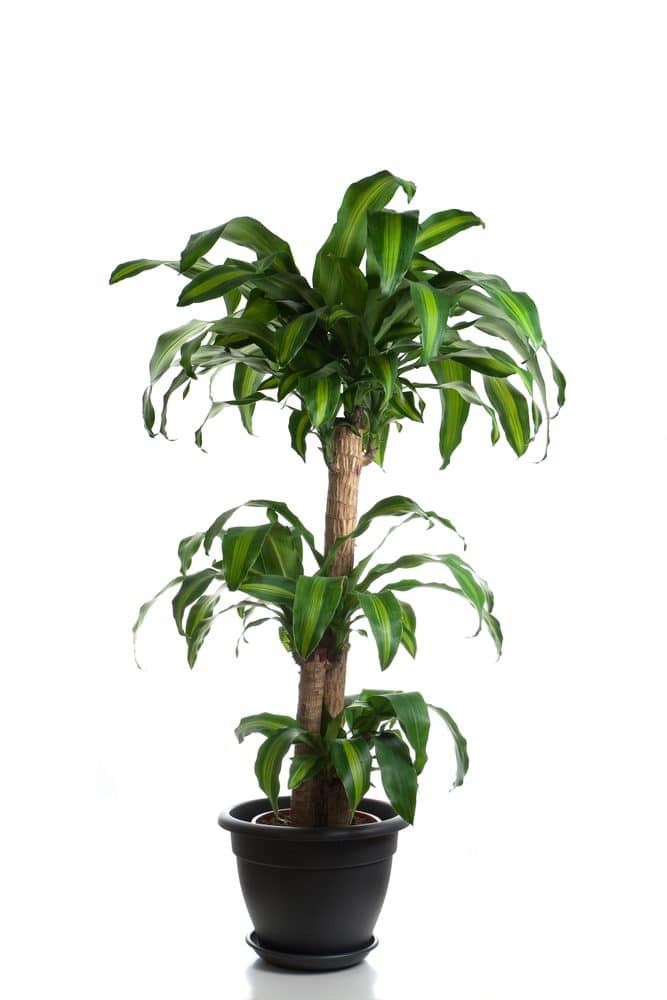
24. Mold Resistant Products
There are all kinds of household items on the market that are moisture resistant and mold resistant. You can find everything from mold resistant shower curtains to moisture wicking towels to mold resistant bath mats to bamboo cutting boards…. The list is endless.
Check out some of my favorite mold resistant products here.
25. Take Advantage Of The Sunlight To Prevent Mold
Mold loves dark spaces indoors to grow in. Allowing sunlight in will reduce the chances of mold growing so open the curtains in rooms during the day to let natural light in.
26. Understand The Climate You Live In
Educate yourself on your region’s climate be it the cold and wet Northeast, the hot and wet South, the hot and dry Southwest, or the cold and dry West. Understanding how it responds to moisture can help you make better decisions about types of building materials to use, landscaping, HVAC units, and the list goes on.
Speaking of building materials….
27. Use Mold Resistant Building Materials
Moisture-resistant building materials are the first line of defense against mold. Whether you are building a new home, renovating an old one, or simply making repairs, use mold-resistant products like mold-resistant drywall or mold-resistant sheetrock and mold inhibitors for paints.
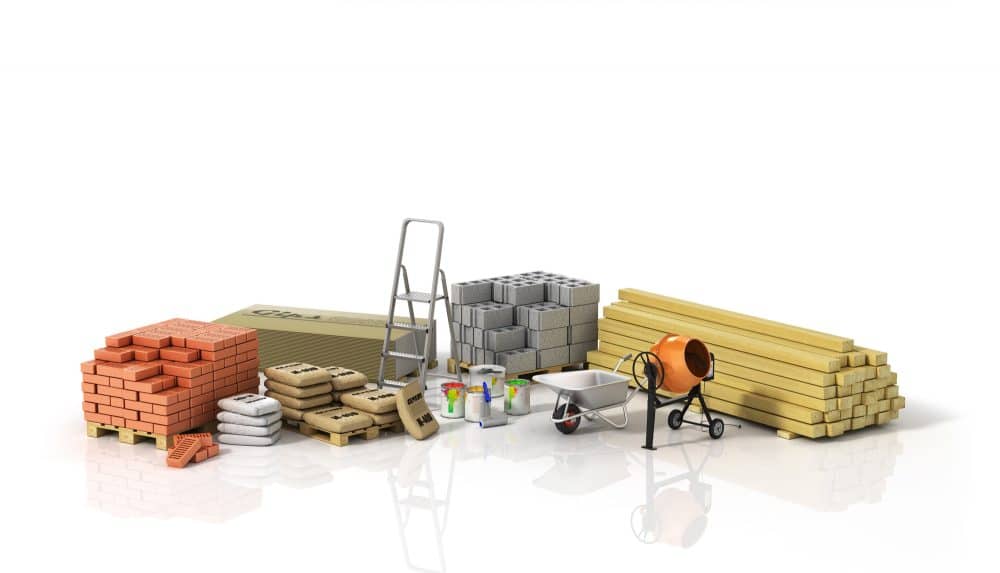
How Do You Prevent Mold Spores In The Air?
Mold spores are everywhere in the air outside. They float through your home, office and other buildings all the time. Mold spores enter homes through windows, doors, air ducts, etc. They can also be transported inside attached to skin, clothing, hair, pets, etc. There is no practical way to remove every mold spore indoors.
Having said that, airborne mold spores increase the potential for mold problems to start so it is a good idea to do what you can to prevent them.
To prevent mold spores in the air, clean and dust often. Vacuum your home regularly, preferably with a HEPA vacuum for mold. HEPA air purifiers in your home also help remove mold spores from the air.
Try to reduce the amount of clutter you have as well. Shuffling “stuff” around send mold spores flying.
What Is The Best Temperature To Prevent Mold Growth?
Mold needs some warmth. It won’t grow in freezing temperatures. Most types of mold need temperatures of 40 degrees Fahrenheit or more to grow.
It isn’t ideal to keep your home below 40 degrees. So really, you need to keep humidity low and the temperature in your home consistent in order to prevent mold growth.
During the hot, humid summer months, set your air conditioner between 68 and 72 degrees Fahrenheit. The relative humidity in your house should not exceed 50 percent. While most modern air conditioners dehumidify as they cool, they do not independently control both temperature and humidity, so you may want to purchase a stand-alone dehumidifier for when conditions are especially humid.
Other tips for using your A/C to prevent mold include setting your A/C’s fan mode to auto because setting it to “on” can cause moisture produced during the air conditioning process to be blown back into your home, reports the Florida Solar Energy Center.
If you head out of town don’t be tempted to turn off the A/C or raise it to 85 degrees. Mold likes heat. Keeping you’re A/C set to 78-80 degrees while you are away is ideal.
Is There Something I Can Spray To Prevent Mold?
Oh yeah!!! Superstratum Mold and Mildew Protectant. This stuff is golden. Depending on where you use it, it can really, truly prevent mold for 6 months – 5 years. Yes, a 5 year guarantee. You need to read my review post on Superstratum to understand how it works but this stuff is incredible.
Should I Use Anything Else To Knock Out Existing Mold Spores That Are Floating Around?
Yes! I actually fog my house monthly with EC3 mold control solution. It has been lab tested to not only render mold spores inactive but it also wipes out mycotoxins which is a pretty big deal.
See which foggers I use and what mold control solution I recommend.
Would you like my printable sheet with Tips To Prevent Mold After A Leak Or Water Event? Enter your email below and download this free tip sheet! Believe me – it will come in very handy one day!
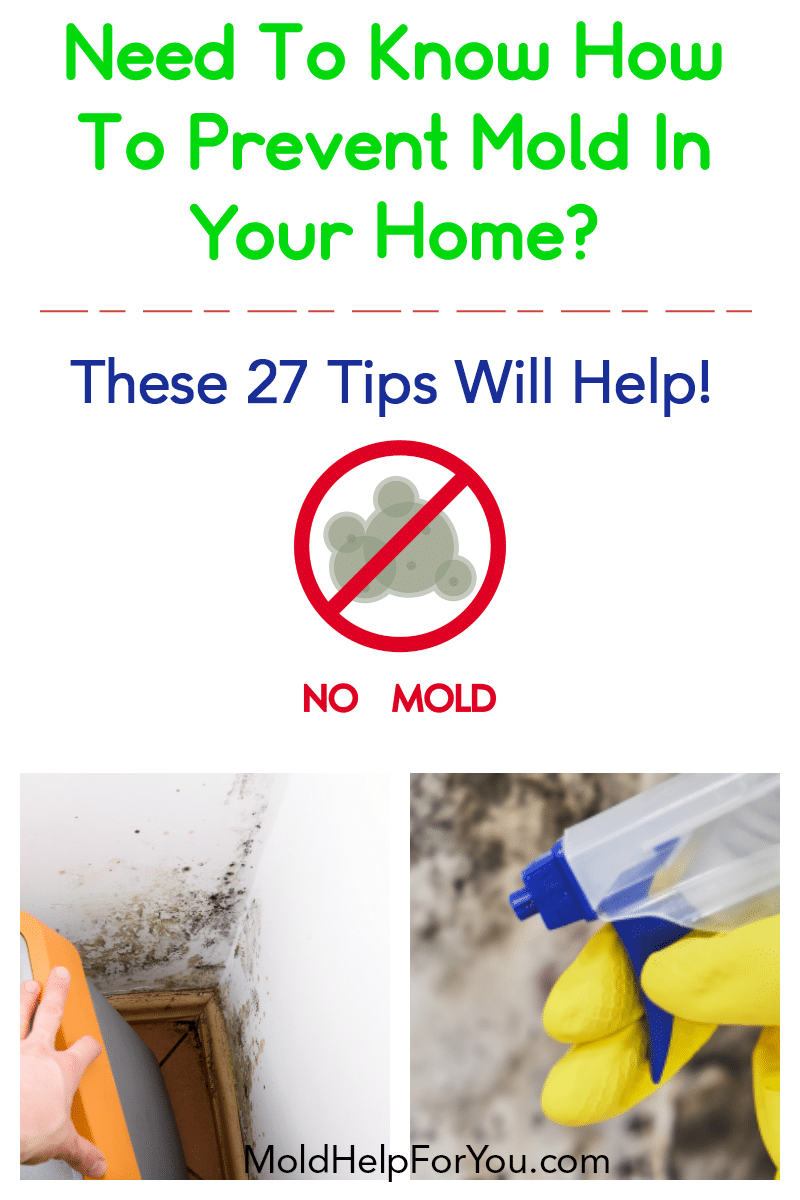

I liked how you mentioned that you should get your house checked for leaks every month to prevent mold from growing in it. My wife and I are wanting to move to a new house soon and we were wondering how we can prevent any mold from growing in the basement. I’ll be sure to have the house checked every month for leaks in the basement.
I’ll be moving out of my parents’ house in a week. Reading this article has given me an idea of looking for a storage unit with proper ventilation since it was mentioned here how molds can form due to condensation. I’ll really consider these tips, especially since I have a lot of clothes and shoes that I’d dread having molds on.
Thanks so much for sharing this info about mold! I have been suspicious of mold in my home & I think I am going to go ahead with a mold inspection. Wish me luck haha!